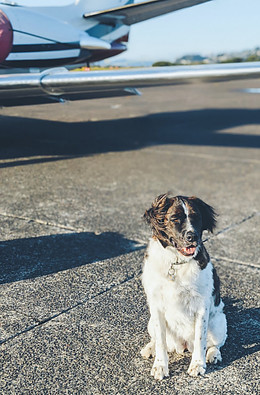 Can I take my four-legged friend with me on a plane? Well, the simple answer here is yes you can. But there are many things to consider before travelling with a dog on a plane.
Can I take my four-legged friend with me on a plane? Well, the simple answer here is yes you can. But there are many things to consider before travelling with a dog on a plane.
At perfectpuppypal.com, we are not qualified veterinarians or animal nutritionists. The information that we provide is general and educational information only and is not a substitute for professional advice.
Is it necessary to take your pet with you?
A lot of people actually enjoy the whole flying experience. During the recent health crises which has resulted in the majority of flights being canceled around the world, I have read articles and reports about people actually paying to go through the entire tedious check-in process then sitting on a grounded plane for hours without going anywhere!
Why? Who knows, I guess these people like the whole flying experience, but personally I am not a huge fan of air travel and the likelihood is, that your furry friend won’t be as well.
Travelling by plane can be a very stressful experience for your pup, from being exposed to crowded, noisy airports and then having to travel alone in a strange environment in the hold while being locked in a crate.
So, if you are only planning on taking a short break and are able to find a suitable family member or friend to take care of your best friend, then leaving them behind would be the best option in my opinion.
But, if you plan to travel for an extensive period of time or are relocating altogether, then there is no choice but to take your pal with you.
Let me tell you a little bit about the only time we had to put my beloved girl on a plane, what was required in order to do so, and also some other helpful hints and tips for you to make the best decision for yourself.
Jessie
 Back in 2005, I wanted to explore more of Europe and after traveling around for nearly a year, my friend and I decided to try to settle down in Gibraltar. Not being great with learning more than the basics of a foreign language, Gibraltar seemed a great place to stay, as English is the primary language spoken there and you can enjoy the fantastic southern Spanish weather.
Back in 2005, I wanted to explore more of Europe and after traveling around for nearly a year, my friend and I decided to try to settle down in Gibraltar. Not being great with learning more than the basics of a foreign language, Gibraltar seemed a great place to stay, as English is the primary language spoken there and you can enjoy the fantastic southern Spanish weather.
Here I was lucky enough to meet a wonderful and amazing woman from Brazil (actually nearing our fourteenth wedding anniversary soon). After about a year living there, we made the decision to leave and move from Gibraltar to her home country Brazil.
Soon after, Jessie arrived. In Brazil, there are millions of street dogs born every year without a place to call home. They roam the streets looking for anything and everything they can eat. Jessie was one of them. Such a loving, kind, and caring girl, we welcomed her into our home with open arms.
After seven years of living in Sao Paulo, spending more time in traffic than actually working, experiencing extreme corruption, and extortionate fees, we decided it was time to move back to Europe. But now, as dog owners, things were a little more complicated than they would have been if it was just the two of us looking to relocate.
So what is the first hurdle to overcome when thinking about such extreme measures?
Some members of our families advised or told us that it was best to just find Jessie a good home and leave her behind as they felt that it would be too much trouble and extremely expensive to travel with her!
Well, it was time-consuming and not exactly cheap to bring her with us back to Europe, but what could we do?
For us, as dog lovers, leaving a member of the family behind was just not an option!
Forward planning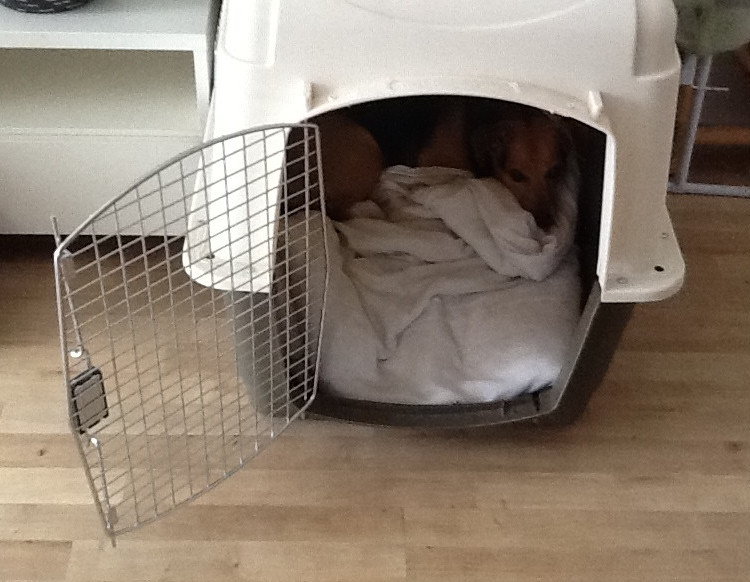
So, the first part of the advice I would like to give you all before traveling with your pooch is to plan ahead. I am the type of person who always has to plan ahead even if it’s just the smallest trip, so imagine how I was when we decided to relocate to a different continent with our dog! We started this process about a year before we planned to leave. Depending on your circumstances or destination there are many things that have to be considered.
These things range from what carrier or crate to buy, if your pal has to be quarantined upon arrival at your destination or (depending on where you have traveled to) upon return to your homeland, to what vaccinations are required, paperwork that needs to be completed, as well as Fidos size, breed, health, and age.
It’s important to buy a sturdy and comfortable pet carrier or crate and one that is the correct size for your dog. Depending on if your animal is flying with you in the cabin or below in the hold there are many different options available to dog owners these days. Always ensure that your pet carrier or crate is airline approved, and at all times double-check with the airline to see if they have any special requirements.
As flying can be an anxious experience for your pal, I would advise that you buy the carrier or crate at the earliest possible opportunity so your dog can get used to their new travel surroundings. With Jessie, we bought her crate several months beforehand, and when at home we put her bed inside it. We wanted to create a sort of safe space feeling for her so that hopefully during the flight she would feel more secure and less agitated.
Quarantine
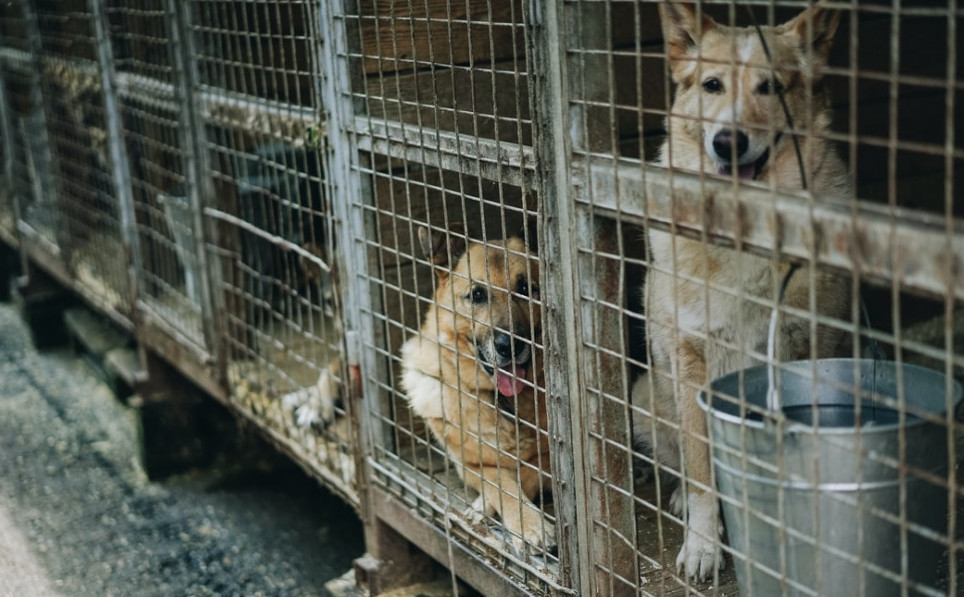
I would definitely look into if there are any quarantine restrictions for your pup on arrival in a foreign land. Just imagine your best friend having to stay alone, locked in a cage without his or her family around them after a stressful flight for 40 or so days (depending on where you are flying to as different countries have different quarantine measures in place than others)! These would certainly not be the best days of your dog’s life or yours for that matter as you would be continuously worrying about how your baby is.
To find out if this applies to your destination then the information should be available on the embassy website of the country you are planning to travel to.
Paperwork
Flying domestically should be fairly straightforward in regards to any paperwork which needs to be filled out, but flying internationally is a different story. When flying from Brazil to Zurich in Switzerland we had to have many different pieces of paperwork completed beforehand.
Of course, it depends on where you are flying from and what legal documents you need to complete for your pooch, so always check with the embassy or consulate of the country you wish to go to.
Vaccinations
When traveling with Jessie all vaccinations had to be up to date and a microchip inserted under the skin. The most important of these vaccinations is a rabies jab (which most dogs should have had anyway) but some countries are intent on seeing evidence of this.
Other vaccinations that are normally required when traveling abroad include:
distemper, hepatitis, leptospirosis, and parvovirus.
Size of your furry four-legged friend
Also, when travelling with a dog on a plane you need to remember that the size of your pal is a serious consideration for airlines. To start with, most airlines will only allow your dog to travel with you in the cabin if they are less than 7kg in weight (this can change slightly between airlines so always check with them first before reserving any tickets either for your pooch or yourself).
Here you will need to purchase a suitably sized pet carrier for your pup. They come in various shapes and sizes and can even transform themselves between being backpacks, carriers, and carry-on luggage holders! Thus making it more convenient to take muttly on board.
Dogs that weigh over 7kg and generally up to about 40kg will have to be checked in and then travel by themselves in the hold. Jessie who weighed in at about 12kg at the time unfortunately fell into this category. So it was imperative for us that she could travel as comfortably as possible.
We actually bought a travel cage a couple of sizes up from what was required for her so she could have more freedom to move around while being away from us alone in the hold. We hoped that this would make the journey a little more comfortable for her.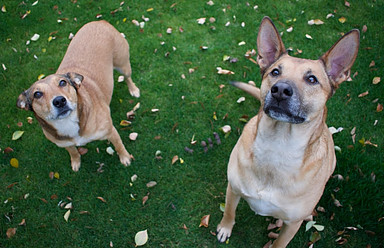
In some cases, if you have a seriously big dog, normally over the 40 kg mark, then certain airlines will only transport them as official cargo, meaning they will not be traveling on the same flight as you but actually on a separate cargo plane.
Again there are different cages available for purchasing, but I would always recommend buying one that has better quality safety features as an inadequate travel cage could be rejected by the airline you are traveling with before boarding, or even worse if accepted could cause harm to your beloved pet during the flight.
Breeds
Before booking a flight with your dog it’s very important to know that some breeds are now not allowed to fly on many airlines due to their nose sizes. Short-nosed breeds, such as pugs, unfortunately, due to their breeding find it very difficult to breathe normally in everyday situations.
So when flying at altitudes of 35 thousand feet or more it is incredibly difficult for them to receive the air that they need even within a pressurised cabin. It was reported recently that in the last year at least half of all dog fatalities while flying came from these short-nosed breeds.
There are other breeds that are more susceptible to having problems while flying, not just the smaller breeds, but care should always be taken when transporting bulldogs, boxers, some mastiffs, and Boston terriers as well.
Sedation
Gone are days of just buying an animal travel cage, putting Fido to sleep inside it, checking your dog in, and then praying for the best. These days it is not permitted to sedate your pet before flying.
Sedating your four-legged friend before they fly could lead to an increased risk of cardiovascular and respiratory problems which can be fatal. As well as these issues, a sedated pet will find it difficult to find balance or brace themselves if the flight experiences any turbulence, therefore the chance of injury to your beloved increases greatly.
The last point to remember here is that airlines simply won’t allow your dog on the flight if they have been sedated. The risk for them is too high and many companies will ask you to sign a statement saying that the animal has not been sedated before boarding.
Travel day preparation
I found that it’s very important to take your time and prepare your furry friend properly before taking them with you on a flight. On the day of travel, it’s better to only feed your pet a light meal, preferably about four hours before take-off as this will reduce the possibility of you collecting a rather dirty and extremely smelly companion at your destination!
Try to give your dog as much exercise as possible on the day as well, hopefully resulting in them being as tired and as less anxious as possible for the journey ahead of them. I found it better with my girl to have a vigorous exercise session before going to the airport and once there let her out again for as long as possible, firstly to try to exhaust any playful behaviour she had left and secondly for her to do as much business as possible before boarding!
During the flight
As mentioned at the beginning, flying is not one of my favourite things in the world, and the feeling of leaving my baby all alone in very strange surroundings below us didn’t make the flight any easier for me!
I was constantly worried about how she was. Asking the air stewards if they were sure that the air con was regulated to the correct temp as there was an animal below. They always told me that it was, but it didn’t stop me from asking again at the next available opportunity!
Upon arrival at your destination
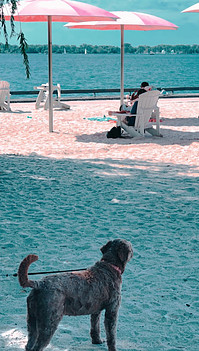
Although not always possible, try to leave the plane and make your way to the collection point as quickly as you can. When you have retrieved your best friend it’s important to get them outside as rapidly as you can so they can stretch their legs and relieve themselves.
This might not always be possible if traveling alone, but if you are traveling with a friend or family member I would advise that one of you collects your pal while the other gets your luggage in order to speed up proceedings.
In our case, I ran to retrieve our luggage and my wife went to find Jessie. Luckily, we were not too far apart, after I got our bags I joined my wife waiting anxiously for our girl to appear. On the conveyor belt, there were pairs of skies, musical instruments, then finally her travel crate came into view!
Thankfully she was fine, upon seeing us her tail started to wag, and finally after so much time apart we were reunited, let her out of the crate, and made a hasty dash for the exit where she gratefully used the facilities!
A checkup at the vets
A visit to your vet is a must before putting your best friend on a flight, primarily to find out if they are fit to fly. If your dog suffers from any health issues (especially respiratory problems) or is elderly, then your vet may recommend that taking them onto a flight would be too dangerous, and in any case, some airlines won’t accept them anyway
When visiting your vet it is advisable to request a health certificate and vaccination record for your pup if you don’t already have this at home. There are different regulations when traveling domestically or internationally so it is always best to check with your airline what is required by them first, and then if travelling internationally check with the embassy of the country you are visiting beforehand.
Choosing the right flight
It is always best to choose a direct flight if possible, even if it means you will be paying more. The stress of flying for your furry friend is bad enough as it is, especially if they are to be transported in the hold.
But just imagine how they would feel after experiencing many encounters with baggage handlers, who let’s face it, just want to get their jobs done as quickly as possible and most likely would not show the care and attention when moving your dog as you or I would.
The right decision
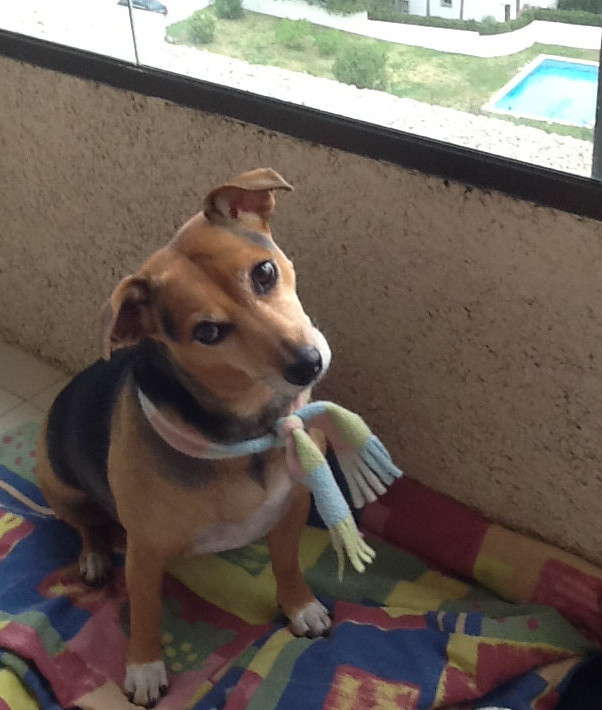
After everything we went through personally and especially what Jessie had to go through, I certainly believe that it was the right idea to bring her with us, in fact as mentioned before, for us, it was the only option.
I would just like to add that our final destination when we arrived in Europe was Southern Spain, where we decided to open a business. But for this part of the journey, we felt it was best not to put Jessie through the strains and struggles of air travel again so we rented a car and drove the remaining 2000km or so from Switzerland to Malaga.
As always we welcome comments here, so if you would like to share your own experience of travelling with a dog on a plane, or have anything else to add then please let us know in the comment section below.
